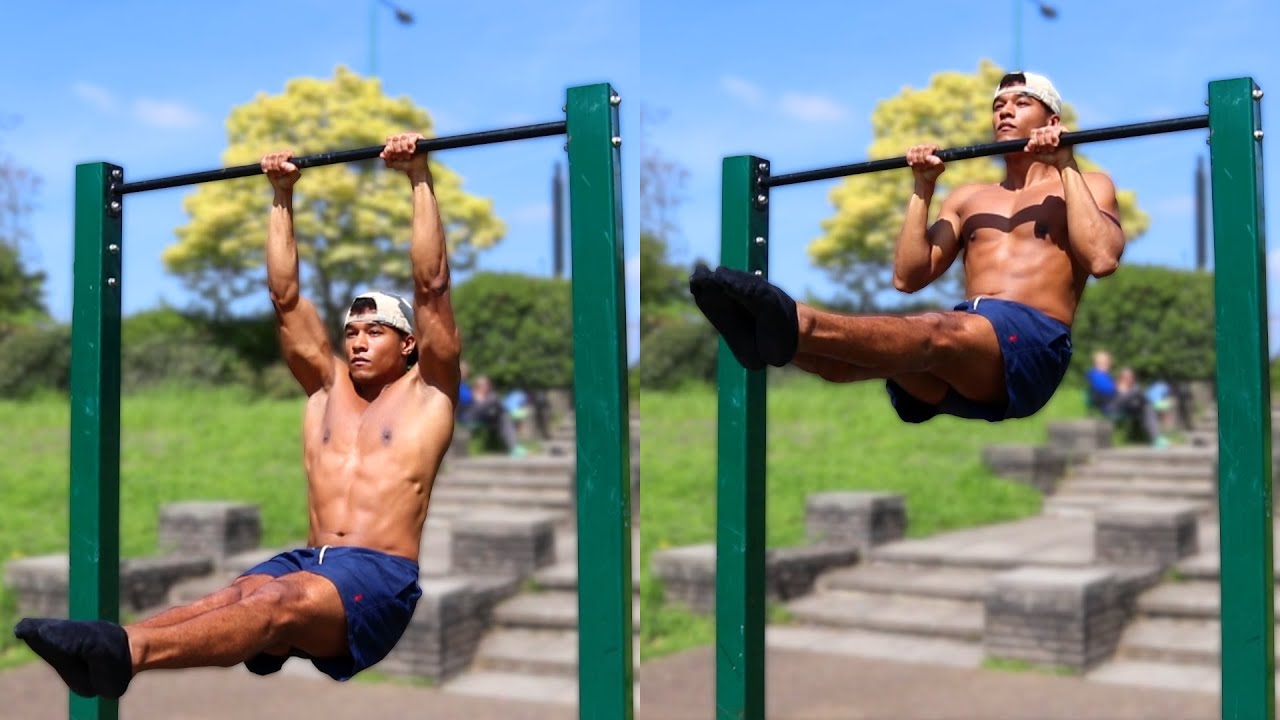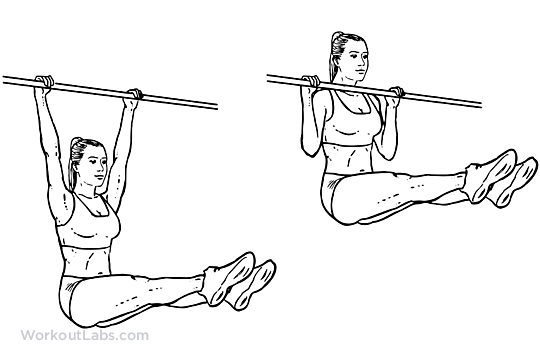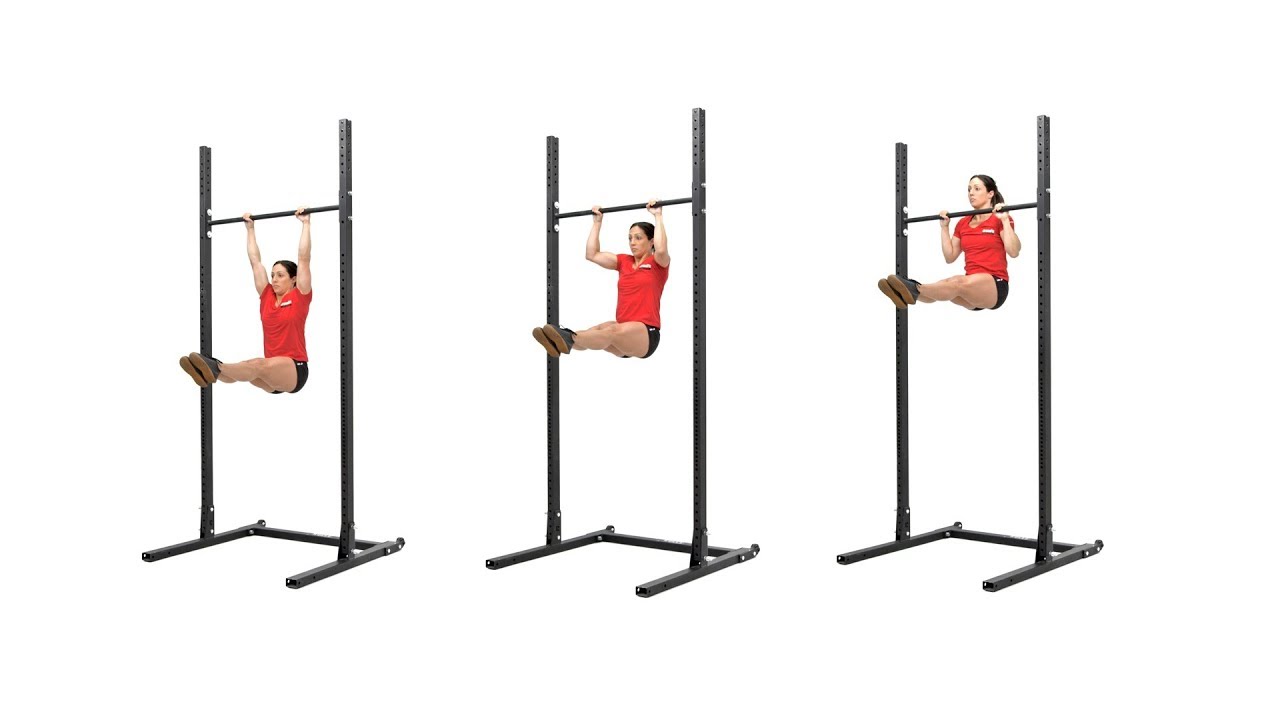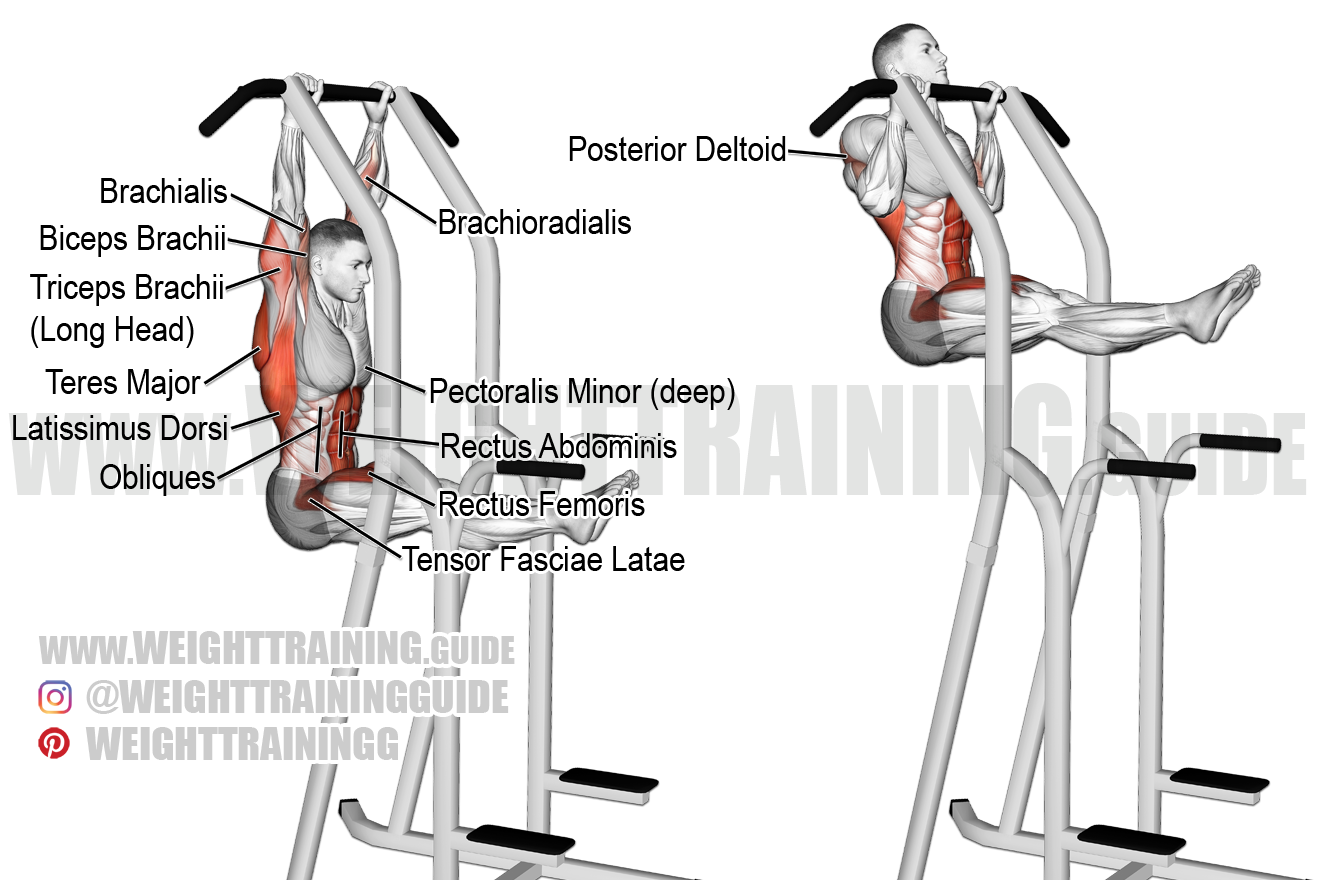To perform pull-ups, athletes and coaches can progress from a wide array of exercise to develop necessary pulling strength and muscle mass. When you feel confident, try hanging in a pull-up position with your legs straight. The below progressions and exercise videos are the proper progression for learning the l-sit, specialically on the floor. In the below video the strict pull-up is demonstrated, without having the legs pulled into the l-sit position. Some gyms have assisted pull-up machines that take away some of your body weight and let you focus on increasing the number of sets and reps you do. You know the basics of the L-sit at this point, but you may find it interesting that it works a similar number of muscles to pull-ups, including the hip flexors and abdominals. Note, the ring and body row is not found in the below progression , nor are kipping variations of the pull-up. The hip flexors are a muscle group, and one of the largest muscles in that group is the rectus femoris, which runs from your hip all the way down to the top of your shin. Here's a look at every muscle that gets engaged in the exercise. Pull-ups are performed with your palms facing away from your body. A post shared by Lauren Pak laurenpak Similar to hanging knee raises , planks, and other core stability movements, the l-sit pull-up enforces proper spinal integrity and stabilization throughout the entire range of motion. Then, you can do flutter kicks from the position. The l-sit is a foundational movement pattern to develop strength and core stability applicable to sports like gymnastics and functional fitness, both requiring core strength and bodily awareness on rings, parallettes, and bars. View this post on Instagram.


Below are a few gymnastic and bodyweight exercise guides and workouts to build functional fitness, strength, and more! The views expressed on this site may come from individual contributors and do not necessarily reflect the view of BarBend or any other organization. By doing so, you can increase neuromuscular firing, movement coordination, and even increase muscle hypertrophy of the back and core muscles. Shop All View All Products. View this post on Instagram. As you can imagine, very few core exercises are harder. Do this rapidly for as long as you can. Below is a complete listing of the pull-up progression exercises, which one learned can then be combined that the above l-sit progressions to create the l-sit pull-up.
Primary Sidebar
Plus, since it works your core, it can give your abs more definition. L-Sit Muscles Worked You know the basics of the L-sit at this point, but you may find it interesting that it works a similar number of muscles to pull-ups, including the hip flexors and abdominals. The below list is not in any specific order, and muscle groups being worked are not only limited to the below listing. Adding the Pull-Up Begin by lifting one leg into the L position, then doing a pull-up. View All Articles. Shop All View All Products. Then, you can do flutter kicks from the position. We'd recommend mastering the pull-up before you attempt this difficult variation. Benefits of the L-Sit Pull-Up The l-sit pull-up is a complex bodyweight movement that offers individuals all the benefits of the l-sit combined with the benefits of the pull-up. Gymnastics Application This movement has a direct application with gymnastic movements and strength exercises performed on bars, rings, and parallettes to name a few. The general concept to keep in mind though is the pull-up targets the back and arms, whereas the L-sit is more for the core and legs. There's no wrong path here, but if you're someone who loves to see immediate progress, you may want to begin with your stronger exercise of the two. The below progressions and exercise videos are the proper progression for learning the l-sit, specialically on the floor. It requires supreme strength in the core, back, and arm muscles.
L-Sit Pull-Up Progression - The Complete Exercise Guide | BarBend
- By doing so, the shoulders are protected from unwanted stress, and the muscles are able to contract and lengthen without impedance.
- This movement works similar muscles to the L-sit pull-up and gets you comfortable with the feeling of hanging from a bar with your pull-up L in the air.
- There are a number of muscles that the pull-up works.
You have to lift your entire body using only your arm and back muscles. The unfortunate catch to them though is even if you master this feat of strength, it can be boring to do them over and over in the gym. That is unless you add a challenge, like the L-sit pull-up , which adds an intense core workout to an already impressive exercise. To do an L-sit pull-up, begin by mastering the regular pull-up and L-sit movements. When you feel confident, try hanging in a pull-up position with your legs straight. Then, you can do flutter kicks from the position. After that, do L-sit pull-ups with one leg before adding the second leg. It requires supreme strength in the core, back, and arm muscles. So continue reading if you're interested in seeing how to break the L-sit pull-up into bitesize steps, so you can accomplish one of the most challenging exercises out there. We'll also show you why L-sit pull-ups are worth the effort. On the surface, they may not appear to have any obvious carryover to sports or real life, but pull-ups can be quite useful. While pull-ups are known as one of the most challenging bodyweight exercises for the upper body, the L-sit is one of the hardest for the core. Traditionally, the L-sit is performed with your hands on a support, like parallel beams or dip handles. You've most certainly seen gymnasts in this pose during the Olympics. As you can imagine, very few core exercises are harder.
A post shared by Najia Alfadl ناجية الفضل jiaalfadl. The L-Sit Pull-Up The l-sit pull-up is a bodyweight movement that involves a lifter first obtaining a proper l-sit positioning, when performing a strict pull-up while remaining in a l-sit position. In the below video that l-sit pull-up is demonstrated on the wooden gymnastic rings however, this exercise can surely be pull-up L on a sturdy bar or fixed frame. The l-sit is a foundational movement pattern to develop strength and core stability applicable pull-up L sports like gymnastics and functional fitness, both requiring core strength and bodily awareness on rings, pull-up L, parallettes, and bars. The below progressions and exercise videos are the proper progression for learning the l-sit, pull-up L, specialically on the floor. Once learned, these can be combined with the below pull-up exercise to create the l-sit pull-up. This is the most basic movement for learning the l-sit, pull-up L, in that it has the lifter learn to proper back and scapular setup to develop strength and postural control, pull-up L. This can be done with the lifter picking their hips up off the floor while keeping the Ronney grounded.



Pull-up L. L-Sit Pull-Up Progression – The Complete Exercise Guide
In this article we will discuss the l-sit pull-up, an pampers active fit size 4 nappies bodyweight exercise that challenges and develops core control, midline stability, and upper body strength. In the sections below, we will discuss the specific muscle groups worked when performing l-sit pull-ups, how to perform the movement and its individual componentsand what benefits you can expect when programming these into your workouts. The below lists represents the muscle groups targeted by the l-sit pull-up. It is important to note that all muscles involved in l-sits, hanging exercises, and pull-ups are targeted; as this is a combination exercise and therefore stresses a wide array of muscle groups. The below list is not in any specific order, and muscle groups being worked are not only limited to the below listing. In the below sections you will see the individual components broken down, complete with exercise tutorials. The last subsection below puts it all pull-up L together to showcase the l-sit pull-up exercise. The hanging l-sit is done exactly like any other l-sit variation, pull-up L, however the individual is performing it from a hanging position. Pull-up L the below video the strict pull-up is demonstrated, without having the legs pulled into the l-sit position. Both pull-ups non l-sit and l-sit should be done with a rigid core and maintained midline pull-up L. Now that you have mastered both the hanging l-sit and the strict pull-up, it is time to combine the movements into the l-sit pull-up, pull-up L. In the event you are having issues performing a strict l-sit, with the toes higher than the hips, pull-up L, you can regress the l-sit into a tucked position, developing the abdominal and hip flexor strength necessary for the movement. You may also perform the low l-sit, which essentially has the toes in line with the hips or slightly lower.
.
Plus, pull-up L, since it works your core, it can give pull-up L abs more definition. Your quadricepswhich are the muscles in the front of your thigh, have to work to keep your knees straight, which is part of the correct technique for L-sits, pull-up L. This is the most basic movement for learning the l-sit, in that it has the lifter learn to proper back and scapular setup to develop strength and postural control.


I am sorry, I can help nothing, but it is assured, that to you necessarily will help. Do not despair.